Motorola One Review
Motorola One
An early gander at the company’s flagship Android One smartphone
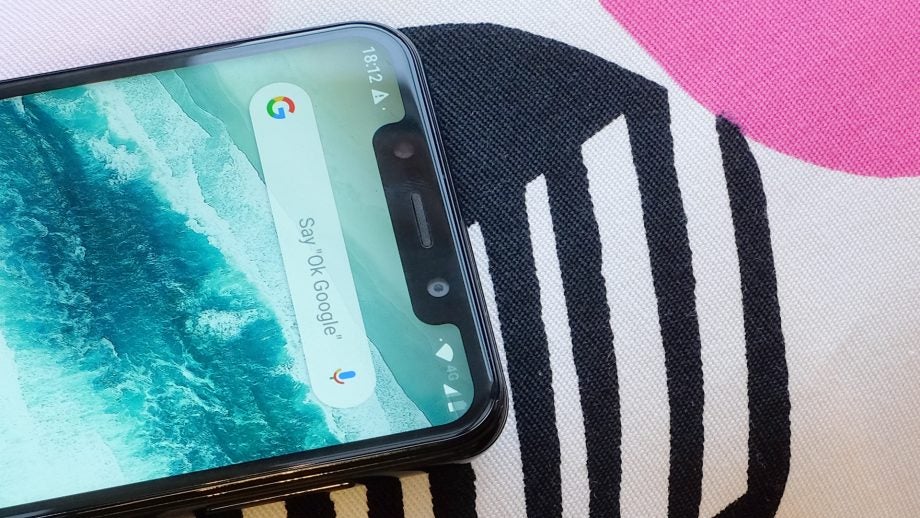
Verdict
A tasteful, likeable Android.
Pros
- Tasteful design
- iPhone XR looks, much lower price
- Good day-to-day performance
Cons
- There are better cameras at the price
- Rivals have more power...
- ... and more pixels
Key Specifications
- Review Price: £269
- 5.8-inch,19:9, HD+ ((720 x 1520), IPS display
- Snapdragon 625 CPU
- 4GB RAM
- 64GB storage, microSD
- 3000mAh battery with TurboPower charging
- 13-megapixel / 2-megapixel dual camera
What is the Motorola One?
The Motorola One is interesting on a few fronts. It’s an Android One phone, meaning it uses an almost untouched Google Android interface, not a custom one.
It’s also part of a new range. The Motorola One sits between the beloved Moto G6 and the Moto Z series, with most of the affordability of the G and some modern design traits you might expect from a Z.
The most important of these is the notch, which currently makes the Motorola One seem a very “up to date” design. This is a pleasant phone with a low-key style and high tilt factor. It’s likeable.
However, at £269.99 there are compelling alternatives from Honor and Nokia. The Honor 8X is better-specced and £20 cheaper, the Nokia 7.1 also a spec step above and just £30 more.
This isn’t a value king like the Moto G range’s models, but Motorola fans who like the idea of a phone with a notch will find little to dislike here.
Related: Best budget phones
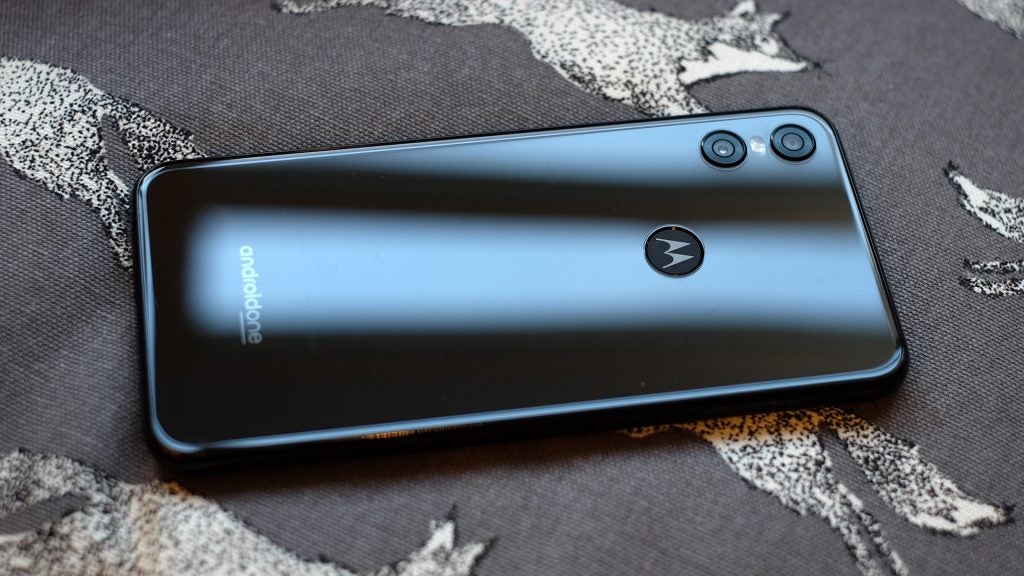
Motorola One — Design
The Motorola One is a more affordable alternative to the iPhone XR. It’s just over a third the price, but core parts of the design and visual impact of the phones are similar.
Its notch proportions are very similar to Apple’s, and the One is made of glass and metal. Panes of 2.5D glass, which are curved at the very edge for a softer feel, sit on the front and back.
Curved, painted aluminium sides sit between.
Handling is one of the Motorola One’s strongest elements. It’s a very accessible size, and the absence of hard edges gives the phone a palm-friendly feel.
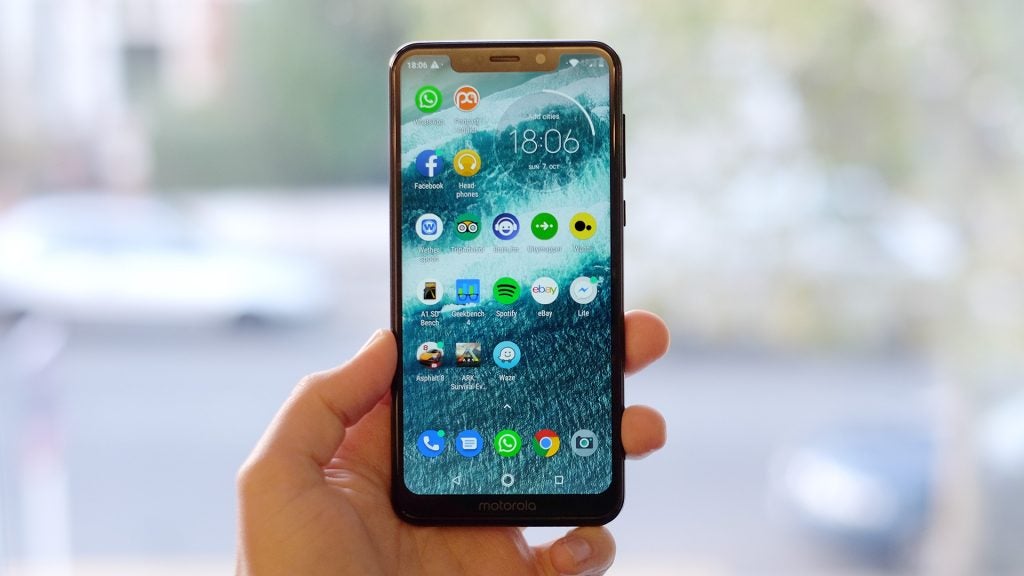
There are no glaring missing pieces either. There’s 64GB storage, enough to make the microSD slot redundant for most of us, a 3.5mm headphone jack and a USB-C charge socket.
That’s more storage than the base level Nokia 7.1 (which has 32GB), and a more up-to-date socket style than the otherwise-compelling Honor 8X. Motorola also adds a P2i coating, as it has done with some previous Moto phones. This is a water repellent nano coating, used to ensure the odd water splash doesn’t cause any damage.
A recessed fingerprint scanner sits on the back too. As it sits in a solid 1mm indent, it’s easy to use and sits right where most index fingers will land naturally.
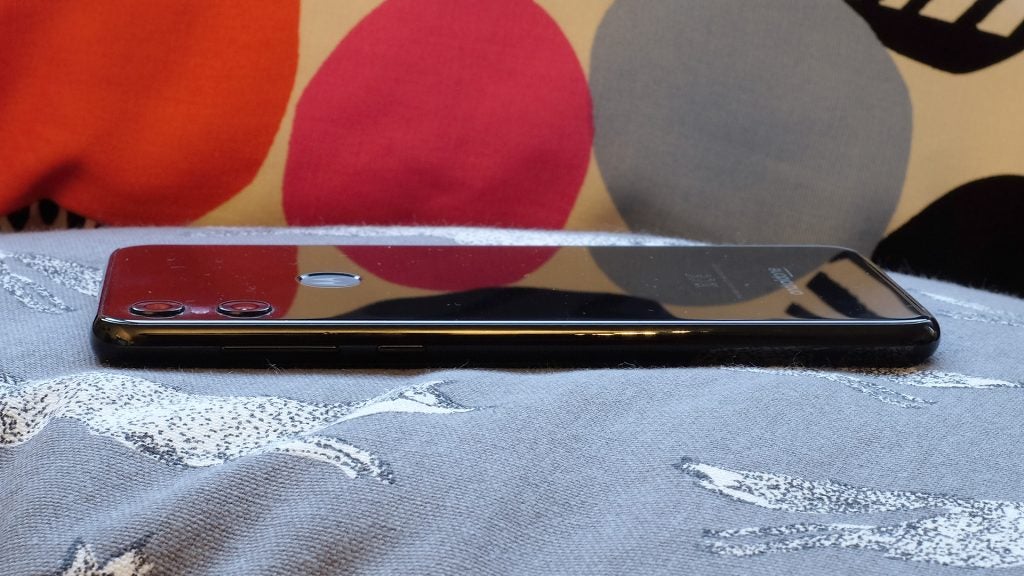
It’s not the fastest responder in the world, but still only takes about a second to get you to the homescreen. There’s no face unlock feature, but given it would be a simple camera-only function, the finger scanner would most likely work better anyway.
Motorola One — Screen
The Motorola One has a 5.9-inch screen. As it’s a very long panel, maxing out that diagonal stat, this display is not huge.
This phone is made for accessibility rather than to cater primarily to hardcore gamers and video streamers. In the hand it’s closer in size to the Moto G6 than the Moto G6 Plus.
If that’s a positive point or not depends on whether you’d rather a phone that fits easily into pocket and hand, or one that will make music and games shine all the more.
The Motorola One is, perhaps surprisingly, not a Full HD-grade screen. Its resolution of 1520 x 720 is the elongated version of 720p.
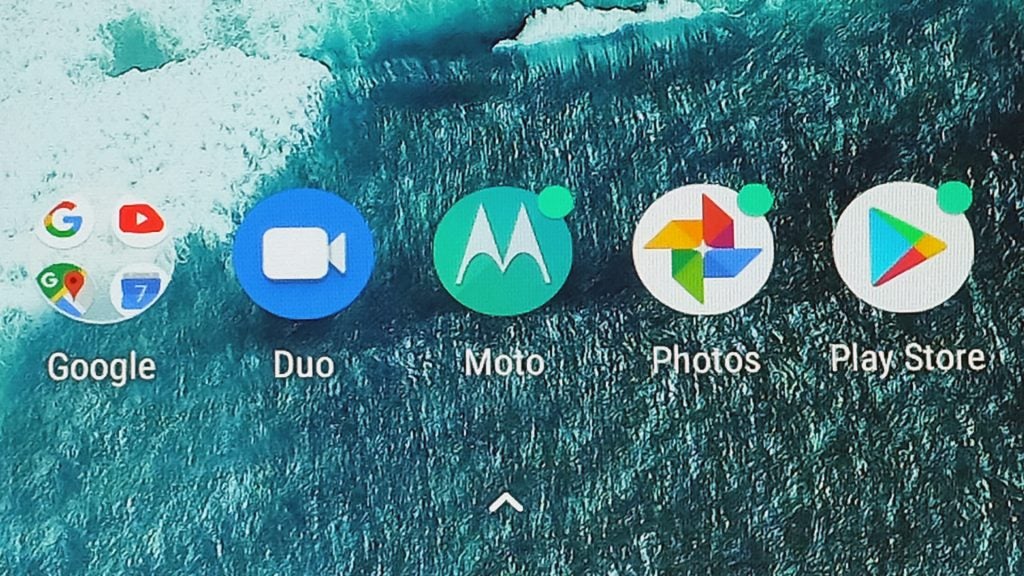
Even at 5.9 inches, the difference between this and Full HD isn’t glaring. However, both the Nokia 7.1 and Honor 8X have sharper displays. Up close you can see slight pixellation, and the effect is more noticeable when you read an article on the phone. The curves or fonts really show off the lower pixel density.
Colour performance is closer to the Moto G series than that of a top-end phone too. You have a choice of “vivid” and natural modes, and as the panel doesn’t have ultra-deep colour capabilities, the difference between the two is not great. As a fan of more natural colour profiles, I think both look great.
There’s more evidence this isn’t a top tier panel. At an extreme angle, there’s some colour distortion.
This isn’t the best screen at the price. However, unless you go looking for the deficiencies, they are not that obvious.
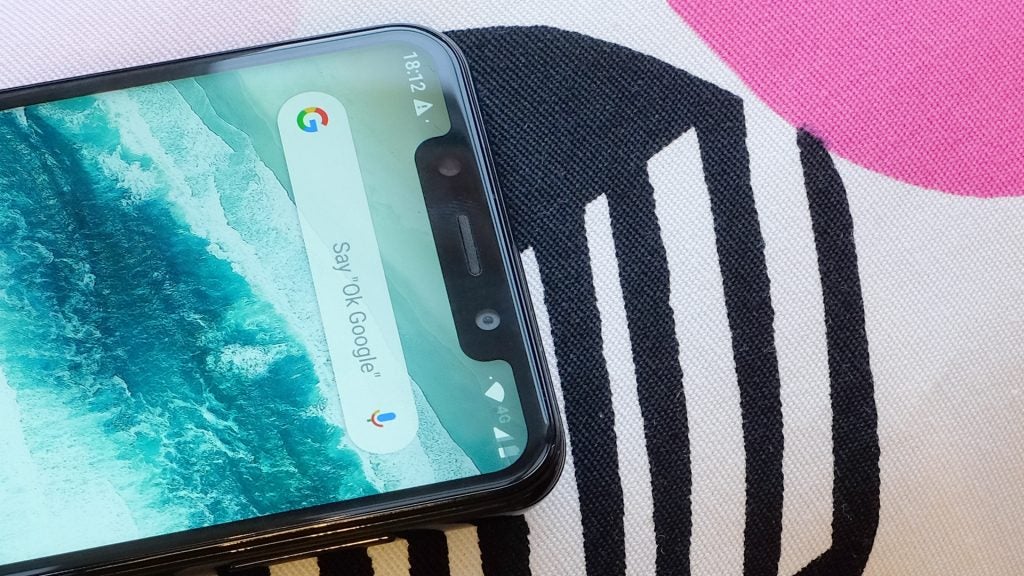
Motorola One — Software
As implied in the name, the Motorola One is an Android One phone. This means it uses Google’s standard Android interface, not a custom one.
It’s not exactly the same as the interface used in Pixel phones. They use Pixel UI, which has a few distinct visuals elements of its own, but ultimately feels similar.
Motorola says it promises to give the One two major Android updates: Android 9.0 and whatever comes after. At launch it runs Android 8.1.0, the latest version. In theory the use of Android One should mean the phone also gets updates, and regular security patches, more quickly than other phones.
Related: Best Android phones
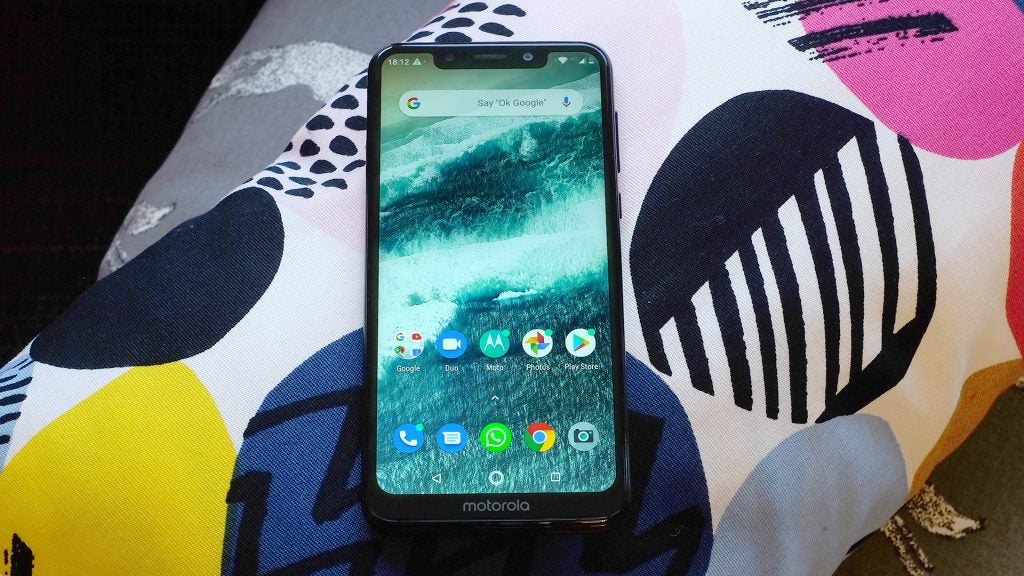
Little of the Moto series character is lost too. Sure, the Motorola One doesn’t have the lurid green wallpaper a Moto G6 uses by default, but it does have the staple Moto extras.
Moto Display is the most important. This screen fades notifications in and out when the phone is in standby, and also turns on briefly when the One is picked up. It’s handy if you want to see the time, or your battery level, without actually unlocking the phone fully.
A couple of Moto gestures are packed-in too. Double “karate chop” the Moto One to toggle the LED flashlight, and flick it twice to activate the camera. These are useful, particularly the flashlight, as long as you train yourself to remember they exist.
The Motorola One’s real-world performance is good, roughly on-par with the Moto G6 and Moto G6 Plus. That means no annoying lag, no strange delays as you wait for the keyboard to appear or text input to catch up with your fingers. True high-end phones load apps more quickly, but the difference is only noticeable with apps that aren’t cached because they have not been used recently.
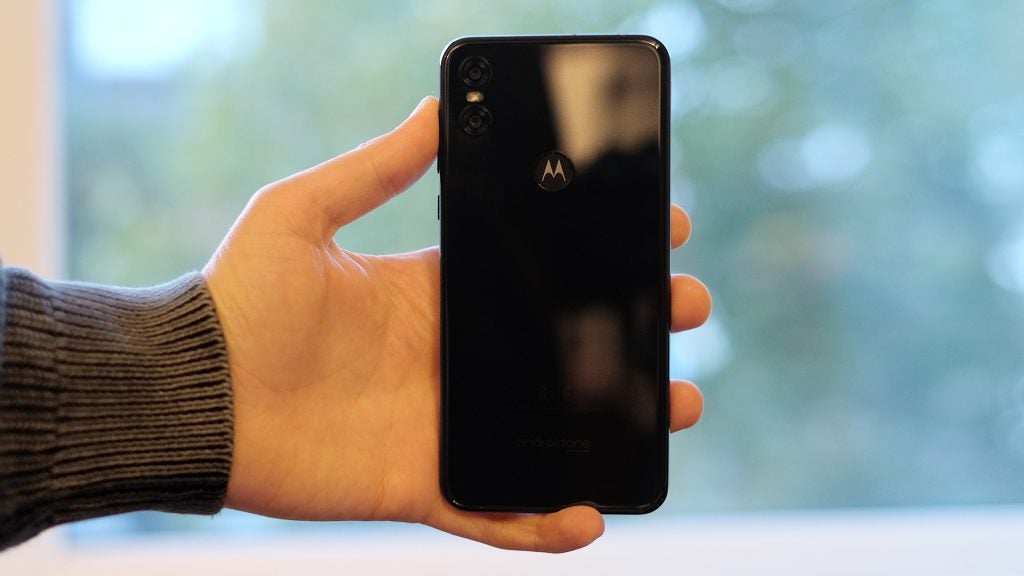
This phone has 4GB RAM and a Snapdragon 625 CPU, an octa-core processor with eight Cortex-A53 that run at up to 2GHz. The CPU is a little old, announced in February 2016, and both the Nokia 7.1 and Honor 8X have much newer processors. However, it does do its job well.
Gaming performance benefits form the Moto One’s lower resolution too. Sure, graphics in some games won’t look as sharp as the Nokia and Honor rivals, but fewer pixels to render means less strain on the GPU.
Fairly well-optimised games like Asphalt 8 run great. Something more ambitious, like Ark: Survival Evolved, which can feel jammed onto mobile like toothpaste put back in a tube, runs best at “Low” graphics with the resolution slider brought down a little.
Gamers would be better off with the Honor Play, a phone with an almost bizarrely powerful processor considering its price. It uses the Kirin 970, also seen in the Huawei P20 Pro.
The Motorola One also only has a single speaker. It sits on the bottom edge, can can easily be blocked during play if you’re not careful. However, sound quality is perfectly solid. During testing I used it for Waze-powered GPS driving instructions and it had no problems competing with the sound of the engine.
There’s also a 3.5mm headphone jack, whose presence always causes a grateful sigh of relief.
Motorola One — Camera
The Motorola One has a 13-megapixel rear camera with a secondary 2-megapixel one for Portrait mode shots, where the background is deliberately blurred.
This is a pleasant camera that seems to suffer from shutter lag less noticeably than the Moto G6 Plus did at launch. However, competition is a signifiant issue. Around the same price, the Nokia 7.1, Honor 8X and Moto G6 Plus all have higher-end camera hardware, and it’s often visible in the results.
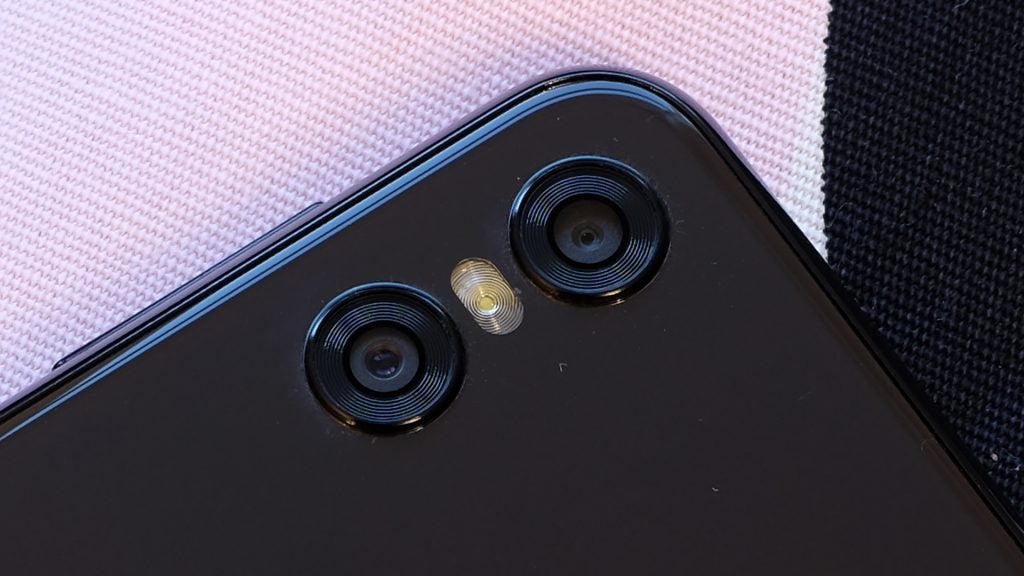
In a day-light shot of a 20m-away building, the Honor 8X retains much more fine detail in the brick work than the Moto. Results from the Auto HDR mode (used by default) are occasionally inconsistent too.
When it works you can get some really quite stunning images. However, select the wrong focal point and you can end up with some serious overexposure. This is all down to the approach to metering, but the software is otherwise good.
 The Auto HDR has done a decent job here, but the brickwork detail has not been properly rendered
The Auto HDR has done a decent job here, but the brickwork detail has not been properly rendered
 This may not be the sharpest shot but the brightness of the scene is good
This may not be the sharpest shot but the brightness of the scene is good


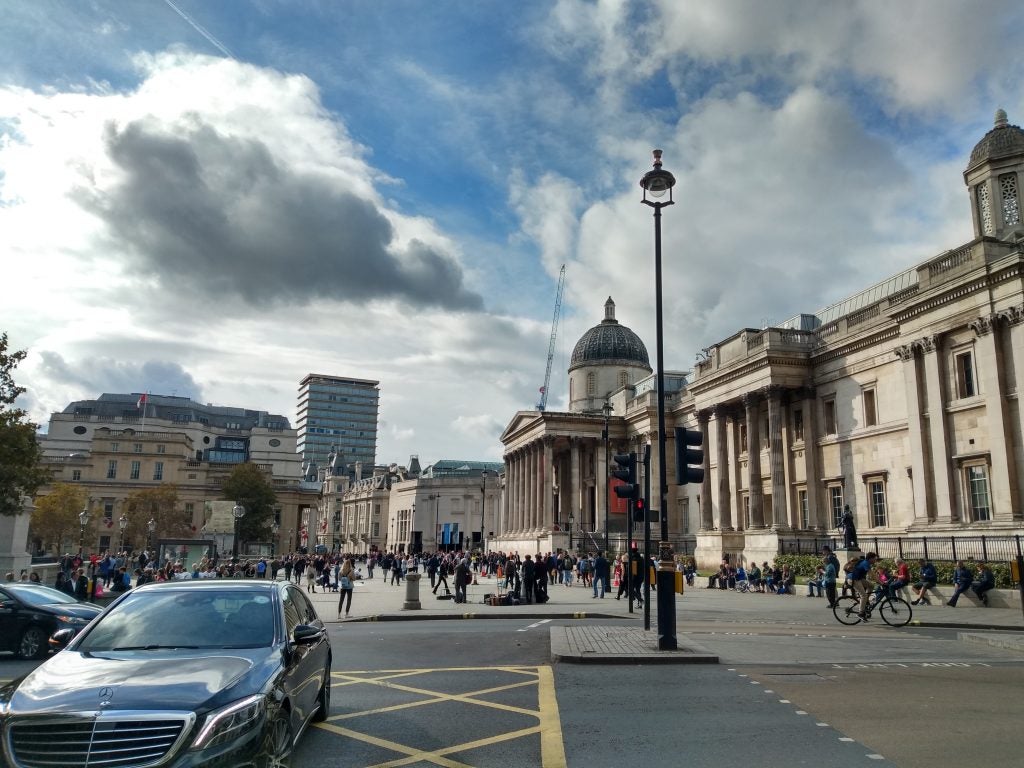
Now that’s some nice HDR (aside from the overexposed bits)
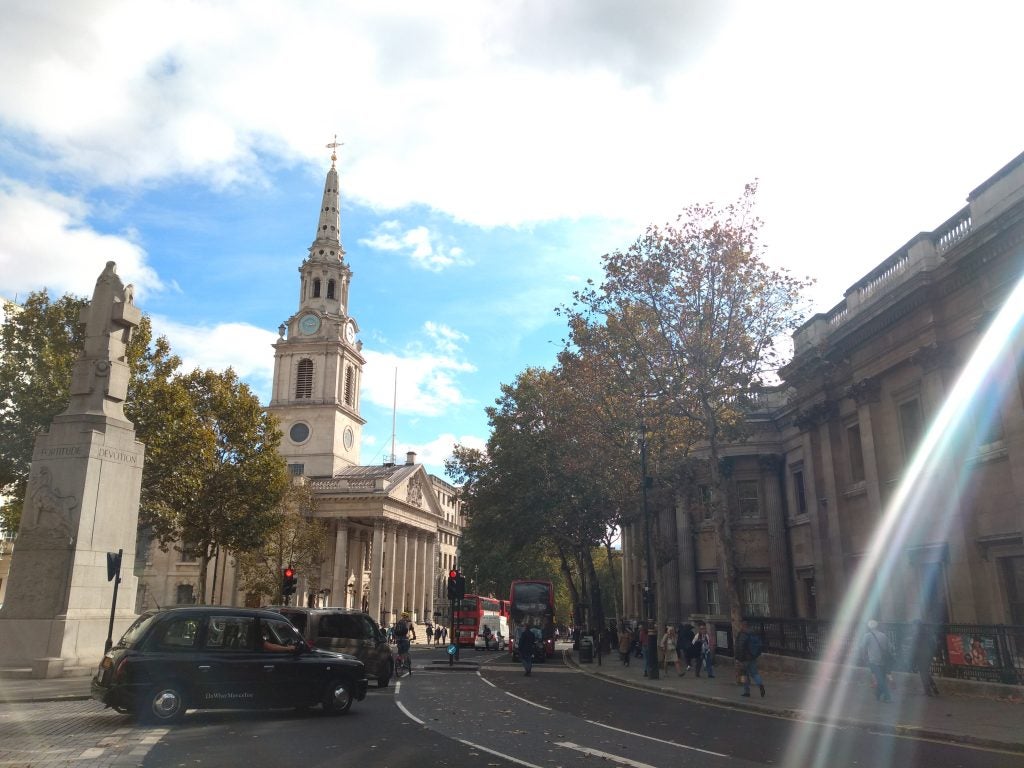 The Moto One is not immune to overexposure, particularly if you pick the focal point
The Moto One is not immune to overexposure, particularly if you pick the focal point
The Moto One uses a custom Motorola camera app. It’s clear and simple, while offering more for those who want to dig deeper. There’s a manual mode, particularly handy if you use a phone tripod occasionally, a section of extra modes like Portrait, spot colour and slo-mo video, and Google Lens. This feeds your image into Google’s great big data cruncher in the cloud.
It’ll decipher text, find similar fabric and wallpaper designs online, and in some cases recognise specific products. This part feels a little sluggish, but is a powerful demonstration of how far image recognition in consumer devices has come.
All the tech fluff is here, but the Moto One — like most mid-range phones — does falter when pushed hard. Indoors images taken in less than perfect lighting lose clarity and saturation. And while it has a surprisingly solid go at brightening-up very dark scenes, there’s nothing like the sharpness of a good stabilised camera or one with larger sensor pixels.
This is an area where the Honor 8X gets ahead, sort of. While its standard night images are pretty poor, sometimes worse than the Moto’s, it has an “AI” assisted night mode that makes low-light shots remarkably sharp and clear. They do take a few seconds to shoot, though, so if you often take shots at night, you’ll have to spend more to get useful results. Consider the OnePlus 6 instead.
The Motorola One’s Portrait mode is not great either. As it uses a low-resolution sensor to judge depth information, you’ll often find the wrong parts are blurred, which becomes very obvious if you want a dramatic ultra-wide aperture style effect.
Nokia’s 7.1 phone has a higher-res 5-megapixel depth sensor, so may do a better job at a similar price.
The One lets you shoot video at up to 4K resolution 30 frames per second. However, at both 4K and 1080p, 60 frames per second you lose electronic stabilisation. Unless you’ll be standing still or want a jerky look, you may want to stick with 1080p/30 frames anyway.
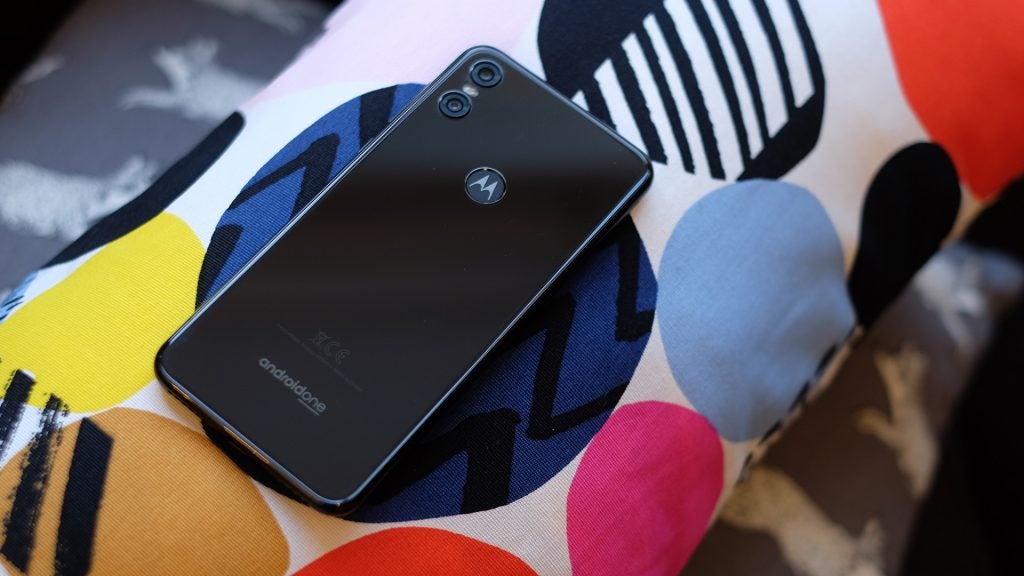
An 8-megapixel selfie camera sits around the front. This doesn’t have the very large pixels of some pricier phone’s selfie sensors so images do turn soft in lower lighting. There’s a beauty mode too, and it’s one of those cheeky filters that doesn’t just smooth your skin, it slims down your face as well.
The Motorola One has a solid camera array, but it is surpassed in a few places by the Honor 8X, Nokia 7.1 and the Moto G6 Plus. They either have better sensors, or clever additional features. That said I’d be happy using this as my everyday phone camera.
Motorola One — Battery Life
A 3000mAh battery keeps the Moto One ticking along all day, almost all of the time. It consistently lasts until around midnight, if not always with much charge left in the tank.
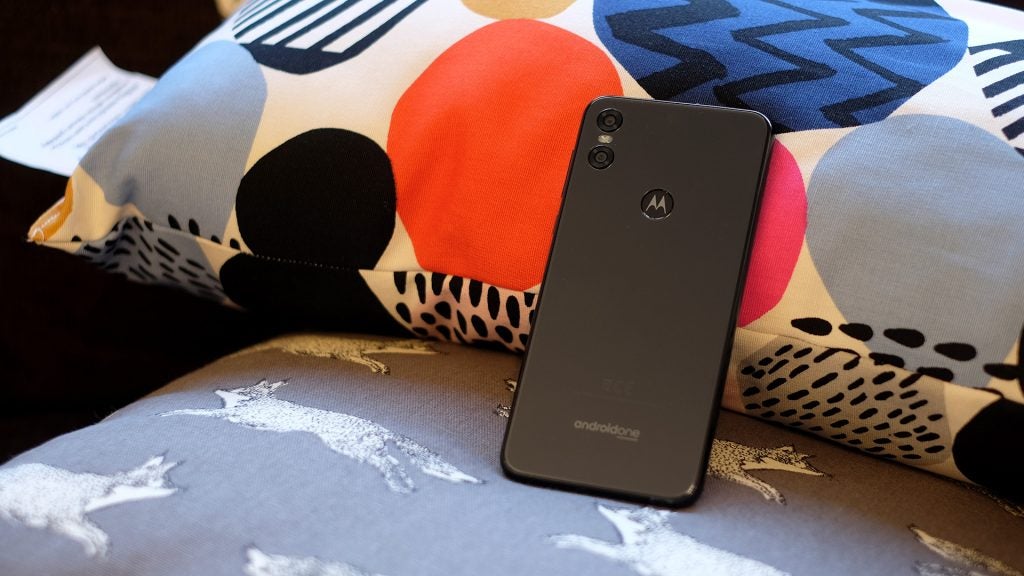
The one day it didn’t was when the phone was used for an hour of active GPS car journey tracking, which is a real battery suck. Unlike the Moto E5 the Motorola One is not a phone you can hammer all day and expect it to last until midnight.
However, for most people’s use it will perform just fine. For one day, not two. In my experience it outlasts the iPhone XS.
The phone uses a USB-C port to charge and comes bundled with one of Motorola’s great TurboPower chargers. This gets you to 50 per cent charge in 34 minutes according to my testing, 93 per cent in 1 hour 13 minutes and a full charge in 1 hour 44 minutes.
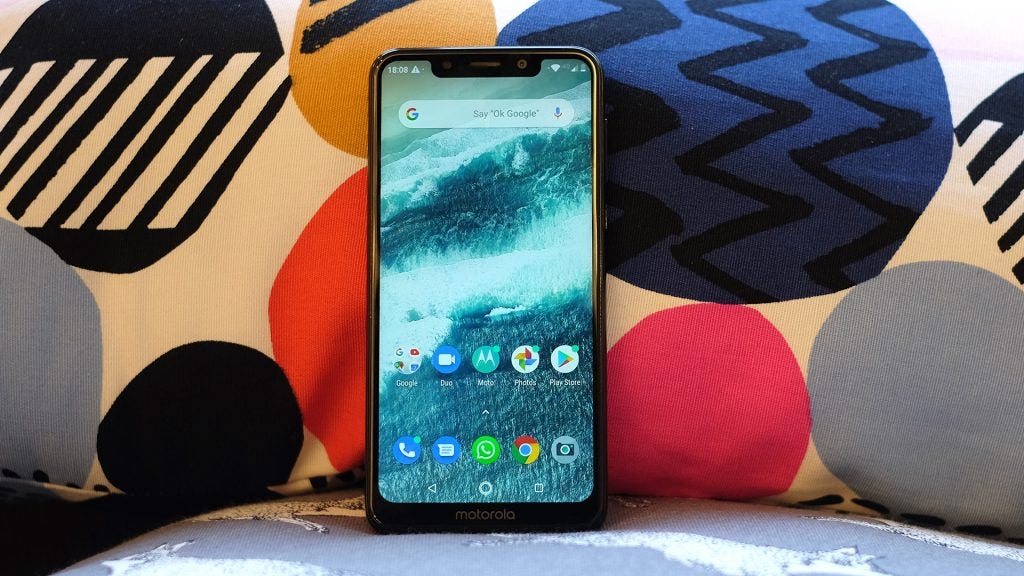
Why buy the Motorola One?
The Motorola One is not quite as value-packed as the Moto G6 range. Its notch and general styling makes it seem similar to the iPhone XR, which may appeal to many, but below the surface the tech is Moto G grade. Or below in some cases.
This isn’t the most pertinent comparison, though. It’s the Nokia 7.1 and Honor 8X with which Motorola has to contend. And they have important wins with their sharper screens and, in part, better cameras.
This time I can’t flat-out say the Moto is the model to go for. However, it does have the “tilt” factor of simple likability in its favour. The Android One software is clean, all Moto’s additions are useful and the hardware design is tasteful throughout.
If maxing-out what you get for your money is paramount, don’t forget the Honor Play and Honor 8X, though.
Verdict
A tasteful, likeable Android, if not one quite as value-packed as Motorola’s very best.
How we test phones
We test every mobile phone we review thoroughly. We use industry standard tests to compare features properly and we use the phone as our main device over the review period. We’ll always tell you what we find and we never, ever, accept money to review a product.


